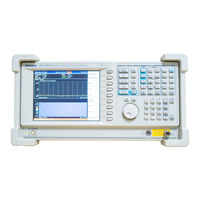Tektronix WCA230A Manuals
Manuals and User Guides for Tektronix WCA230A. We have 5 Tektronix WCA230A manuals available for free PDF download: Programmer's Manual, User Manual, Service Manual, Instructions Manual
Tektronix WCA230A Programmer's Manual (678 pages)
3 GHz & 8 GHz Portable Wireless Communication Analyzers
Brand: Tektronix
|
Category: Measuring Instruments
|
Size: 1 MB
Table of Contents
Advertisement
Tektronix WCA230A User Manual (454 pages)
3 GHz & 8 GHz Portable Wireless Communication Analyzers
Brand: Tektronix
|
Category: Measuring Instruments
|
Size: 6 MB
Table of Contents
Tektronix WCA230A Service Manual (332 pages)
Portable Wireless Communication Analyzer
Brand: Tektronix
|
Category: Measuring Instruments
|
Size: 5 MB
Table of Contents
Advertisement
Tektronix WCA230A Service Manual (264 pages)
3 GHz & 8 GHz Real-Time Spectrum Analyzers
Brand: Tektronix
|
Category: Measuring Instruments
|
Size: 4 MB
Table of Contents
Tektronix WCA230A Instructions Manual (18 pages)
IQ Input Function
Portable Wireless Communication Analyzer
Real-Time Spectrum Analyzers
Brand: Tektronix
|
Category: Measuring Instruments
|
Size: 0 MB




